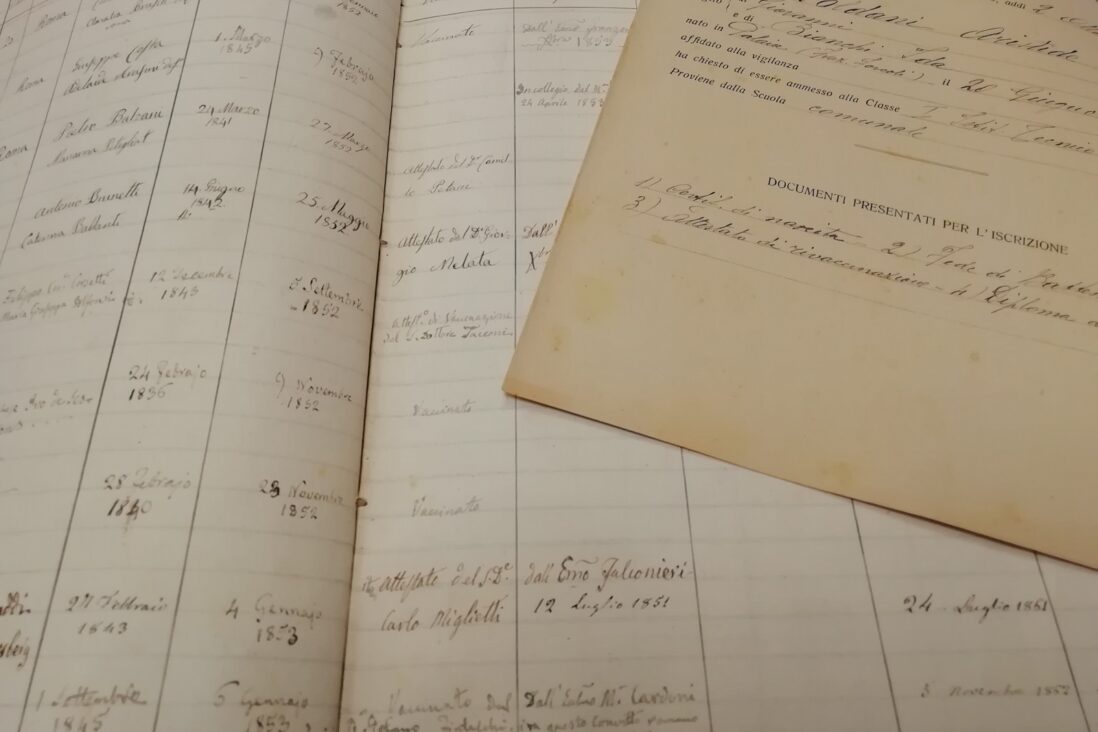Table etiquette

There are a number of television programmes that reintroduce the subject of table etiquette or the so-called art of knowing how to receive. Why stop at what we hear on TV? Let’s go to the sources! We can also draw from our own papers some pearls of wisdom on what is right and what is not at the table.
The source that accompanies us on this journey today is a manuscript found in the folders of the Collegio Vida in Cremona, which deals with the ‘Rules of good table manners’.
In the colleges of the Company, in addition to school subjects, table manners were also taught, with rules to be observed. The regulation in question is addressed directly to its user, the boarder; let us read some passages together: At the table, more than in any other place, one knows whether the young person is master of himself and whether he is truly polite. When you find yourself at table, therefore, do not neglect to practise carefully and casually at least the principal and most important civilised customs […].
– At the table, be composed, do not roll up your sleeves like a doctor about to perform an operation, do not stand too close to the table, but not too far away either […] do not lower your head with every mouthful as the hen does with every sip of water she swallows.
– The bread is placed on the left or in front, you must not break it with your mouth, nor cut it with the knife, but break it into small pieces, just enough to bring it to your mouth with two fingers.
– The cutlery, the bottle and the glass must always be on the right or in front.
– The spoon is used with the right hand, and one holds it with only three fingers at the last end of it and with certain art and elegance. One does not put the whole spoon in the mouth to absorb the broth or soup, but it is sufficient to put in a little less than half of it. Take care that the spoon is not too full.
– It is not permissible to bow the plate to scoop up every last grain of rice or the last drop of broth. Do not blow on the soup, but let it cool down by moving it slightly with the spoon.
– The fork is held between the thumb and the other four fingers with the tip downwards and can be held either in the right hand following the old fashion, or in the left hand according to the English custom.
– […] It is an uncivil act to gesticulate with the knife and to make all sorts of movements in the air with it. The knife then must never be used to bring food to the mouth or to hand it to others.- The napkin is to be used to wipe the lips and fingers when needed, and especially before and after drinking so as not to make the rim of the glass greasy, but it would be indecent to use it to wipe sweat or for other worse uses.
– Neither bread, nor peaches, nor lemon wedges are to be put in the glass.
– At table one should not put one’s hands in one’s hair or fingers in one’s ears.
– When eating, take care to avoid any noise from both the mouth and nose so as not to arouse repugnance and disgust in others.
– One of the most uncivil acts, and one that is customary among many young people, is to wipe one’s mouth with one’s hand. This office belongs to the napkin or the handkerchief when it is clean.
– When you are given the opportunity to speak, be very careful not to raise your voice too loudly, in danger of changing the refectory into a tavern.
These provisions date back to 1910, but are not mere legacies of the past, but valid guidelines of good behaviour, still valid today.
Maria Macchi











